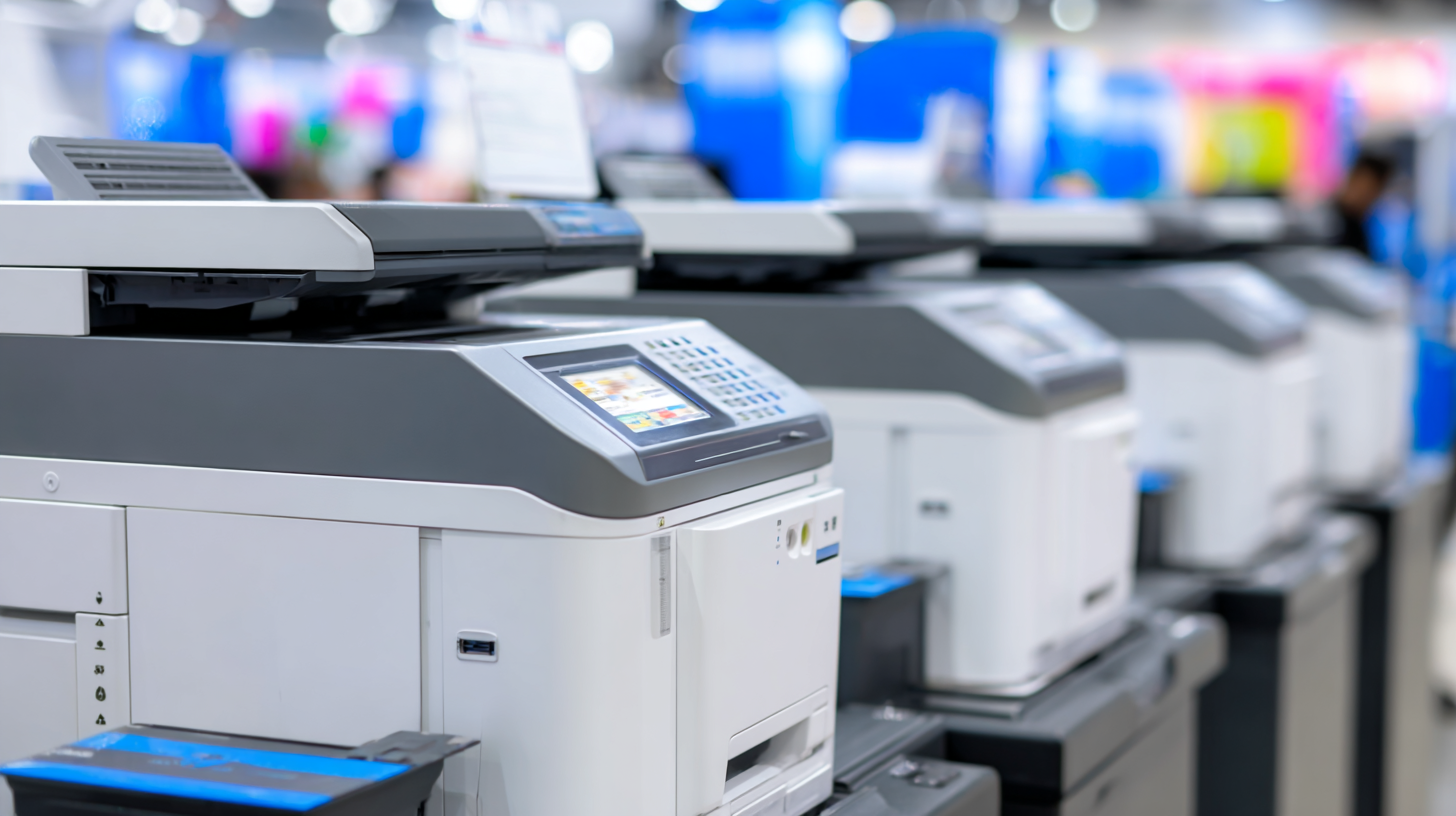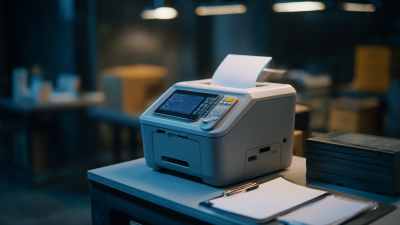In recent years, the rise of thermal printers in small business operations has been nothing short of revolutionary. According to a market research report by Grand View Research, the global thermal printer market size was valued at USD 4.23 billion in 2022 and is projected to grow at a compound annual growth rate (CAGR) of 7.6% from 2023 to 2030. This growth is largely driven by the increasing need for efficient, cost-effective printing solutions among small enterprises. Thermal printers streamline processes by providing fast print speeds, reliability, and minimal maintenance costs, which are essential for businesses operating on tight budgets and time constraints.

As small businesses increasingly adopt technology to enhance their operations, understanding how thermal printers can lead to improved workflow, customer satisfaction, and ultimately, higher profitability is crucial. This article will explore the transformative impact of thermal printers on small business operations, offering insights into their utility and advantages in today’s fast-paced market.
Thermal printers are becoming essential tools for small businesses looking to streamline their operations and enhance efficiency. Unlike traditional printers, thermal printers use heat to produce images on special paper, which eliminates the need for ink or toner. This technology is not only cost-effective but also significantly reduces maintenance and replacement expenses. Furthermore, thermal printers are compact and user-friendly, making them ideal for small offices or retail environments.
When considering a thermal printer for your small business, here are some tips to keep in mind. First, assess your printing needs—whether it's for labels, receipts, or shipping documents—to choose the right type of thermal printer. Additionally, consider the connectivity options; many modern thermal printers offer Bluetooth and Wi-Fi capabilities, allowing for seamless integration with your existing systems. Lastly, invest in high-quality thermal paper to ensure clear prints and optimize the printer's performance.
Incorporating thermal printers into your business operations can dramatically improve the speed and accuracy of your workflow. They not only save time but also enhance customer satisfaction by providing faster service. As small businesses continue to adapt to changing market demands, embracing this technology can lead to significant operational improvements.
Thermal printing technology is transforming small business operations by offering significant advantages that enhance efficiency and reduce costs. According to a report from Smithers Pira, the global market for thermal printing is projected to reach $48.0 billion by 2027, highlighting the growing adoption of this technology across various sectors.
One of the most notable benefits of thermal printers is their speed; they can produce labels, receipts, and tickets up to 300mm per second, allowing businesses to serve customers more quickly and effectively.
Another key advantage is the low maintenance and operational costs associated with thermal printers. Unlike traditional inkjet or laser printers that require costly inks and toner, thermal printers primarily rely on specialized paper, which can be approximately 20% cheaper than conventional printing supplies. Moreover, businesses that use thermal printing can save an estimated 40% on printing costs over time, as reported by the International Imaging Technology Council. These cost savings, combined with faster processing times, make thermal printers an ideal choice for small businesses looking to streamline their operations and improve customer satisfaction.
Implementing thermal printers in small businesses is proving to be a game-changer for enhancing operational efficiency. These printers, which utilize heat to produce images on paper, streamline the printing process by eliminating the need for ink cartridges. This not only reduces operational costs but also minimizes maintenance time, allowing employees to focus on core business activities. Thermal printers are especially beneficial in environments where speed and accuracy are paramount, such as retail and logistics.
Moreover, the compact design and user-friendly interface of thermal printers facilitate seamless integration into existing workflows. Business owners can easily deploy these devices to print receipts, labels, or invoices, significantly speeding up transaction times and improving customer satisfaction. Additionally, the durability and reliability of thermal printing technology ensure consistent performance, minimizing downtime and further enhancing productivity. With such advantages, it's clear that adopting thermal printers is a strategic move for small businesses looking to optimize their operations.
The chart above displays the impact of implementing thermal printers on small business operations. It showcases the improvements in print speed, cost savings, error reduction, and customer satisfaction before and after the adoption of thermal printer technology. This data illustrates how thermal printers can enhance operational efficiency and customer experience in small businesses.
When selecting a thermal printer for your small business, it is essential to consider both the specific needs of your operations and the various options available in the market. First, identify the primary tasks the printer will perform, such as printing labels, receipts, or shipping documents. This will help narrow down the type of thermal printer you require—direct thermal vs. thermal transfer. Direct thermal printers are often more economical and require less maintenance, making them suitable for businesses that need short-term compliance labeling or receipt printing. On the other hand, thermal transfer printers provide higher durability and are ideal for products that require labels to withstand environmental factors.

Next, assess additional features that could enhance your business's efficiency. Look for models that offer wireless connectivity, which can streamline the printing process from various devices without being tethered to a single workstation. Furthermore, consider the speed and resolution of the printer; a faster printer with high-resolution capabilities can significantly improve workflow, particularly for businesses with high-volume printing demands. Lastly, evaluate the cost of replacement supplies, such as labels and ribbons, as these can impact your overall budget. By carefully weighing these factors, you can choose the most suitable thermal printer that aligns with your business needs and maximizes operational efficiency.
The integration of thermal printing solutions into existing systems is proving to be a game changer for small businesses. By seamlessly connecting thermal printers with software applications, businesses can significantly increase efficiency and accuracy in their operations. For instance, point-of-sale systems can directly interface with thermal printers to produce receipts and invoices in real-time, reducing wait times and enhancing customer satisfaction. This direct integration negates the need for additional manual input, leading to fewer errors and smoother transactions.
Moreover, thermal printing technology can be tailored to fit various business needs, from generating labels for products to printing shipping documents. With the advent of cloud-based systems, small businesses can now access and manage printing tasks remotely, allowing for greater flexibility and control. This integration not only streamlines workflows but also aids in inventory management by providing up-to-date labeling and tracking information. Overall, the coupling of thermal printing solutions with existing business infrastructures equips small enterprises with the tools necessary to compete more effectively in today's fast-paced market.







